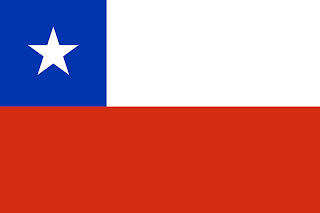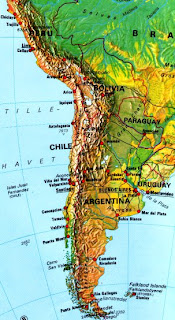Wednesday, January 30, 2008
Global Warming in Chile
In order to go along with the major event that Lynchburg College is hosting this week, Focus the Nation, I thought that it would be fitting to talk about one of the most major concerns facing the world today, global warming and climate change. Chile is going to be in a lot of trouble if the increasing threat of global warming continues to grow. Although Chile only contributes a very small percentage compared to the rest of the world in terms of greenhouse gases, they will be feeling the effects the most. This is because the country has a large amount of its land near Antarctica and has many ice fields. If global warming continues to grow at an exponential rate then that ice will melt and Chile will lose hundreds of miles in coastline. Global warming is already affecting local farmers. In an article found in the New York Times, a Chilean farmer had lost about forty percent of his avocado crop due to uncharacteristic frosts. The entire article can be found at this website. http://www.nytimes.com/2007/12/23/opinion/23skarmeta.html?_r=1&oref=slogin.
Monday, January 21, 2008
Gettin Down to the Basics

So, I thought that it would be a good idea to start with the basics of Chile, including its geography, political structure, economy and the major exports and imports. I found most of this information on CIA: World Factbook.



Chile is a very long country that runs down the spine of South America and is a little bit smaller than twice the size of the state of Montana. Argentina, Bolivia, and Peru border Chile. The country boasts many different climates, ranging from a desert in the north, Mediterranean-like climate in the center, and cool and damp in the south. The capital is located in Santiago found in central Chile.
The population is mostly composed two different ethnic groups, white and Amerindian. Roman Catholic reigns king for religion and most of population is literate and speaks Spanish as its major language.
The government is run as a republic with the country celebrating its independence from Spain on September 18th every year. President Michelle Bachelet Jeria was elected on March 11, 2006 and will end her term as President in 2010 after a single four year term. The bicameral National Congress is seperated into the Senate, which holds 38 seats, and the Chamber of Deputies, which has a total of 120 seats. There is also a Supreme Court, which is very similar to the United States because the President appoints the judges and the Senate must approve them.

Its main exports are copper, fruit, fish products, paper and pulp, wine, and chemicals. Its top three main export partners are the U.S., Japan, and China. Chile's main imports are petroleum and petroleum products, chemicals, electrical and telecommunications equipment, industrial machinery, vehicles, and natural gas with its main leading import partner as the U.S. again. Other import partners include Argentina, Brazil, and China. Chile operates its economy on the Chilean peso and as of January 21, the exchange rate for 1 U.S. dollar would give you 483.45 Chilean pesos.
I think that is a pretty good start in understanding Chile!
Wednesday, January 16, 2008
First Blog!
My first blog about Chile and its role in Latin American Politics! I must confess that I do not know a lot about the subject but am hoping to post a lot of different materials here in order to understand and appreciate the country's role better.
Subscribe to:
Posts (Atom)